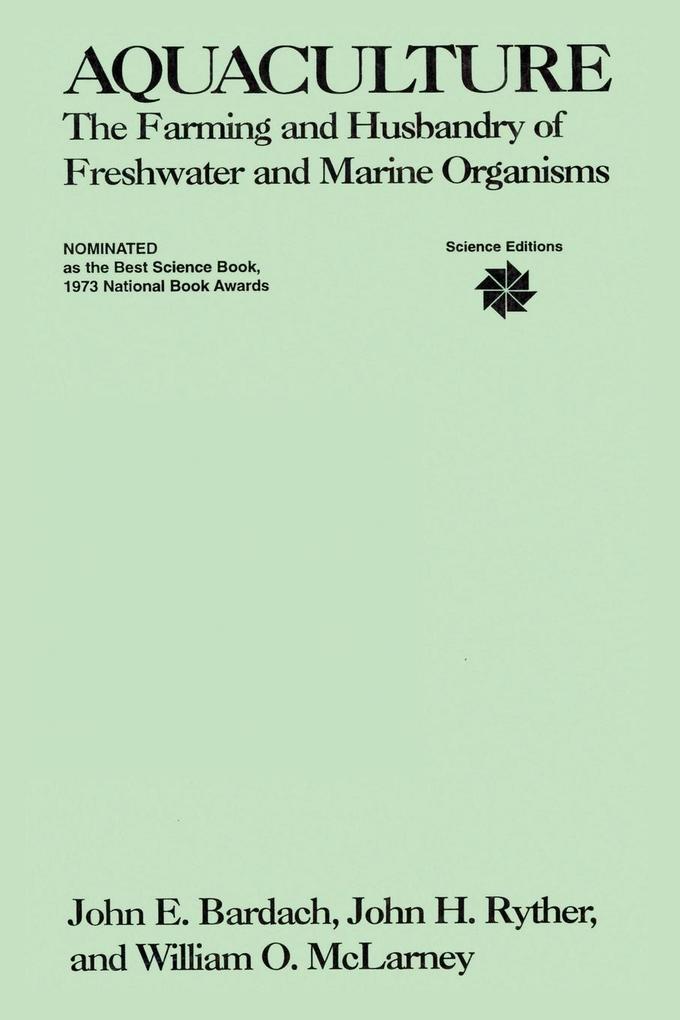Captive Seawater Fishes Science and Technology Stephen Spotte "The book is clearly a labor of love, and one must admire the author's boundless enthusiasm and breadth of scholarship." New Scientist A seamlessly clear treatise on the science and technology of maintaining seawater fishes for purposes of aquaculture and public exhibition. Captive Seawater Fishes is the first book to bring together in one volume the disciplines of seawater chemistry, process engineering, and fish physiology, behavior, nutrition, and health. Richly illustrating the interplay between living fishes and the chemical and sensory stimuli of their environment, the book details: chemical processes controlling carbonate stability in seawater; the effect of captivity on physiological processes; sensory processes of fishes, including vision, hearing, and electroreception; diseases of seawater fishes and treatment methods; and more. 1991 (0-471-54554-6) 976 pp. Surveys of Fisheries Resources Donald R. Gunderson The intensive exploitation of fisheries resources has heightened the reliance in the industry on statistical surveying as a means of monitoring the abundance and age composition of existing fish reserves. Here is the first comprehensive look at the unique challenges and problems of fisheries surveying. Covering everything from survey design, bottom trawl surveys, acoustic surveys, to egg and larval surveys and direct counts, as well as the assumptions and limitations surrounding each method, the book is an exhaustive, yet practical guide to designing accurate, cost-effective fisheries surveys. 1993 (0-471-54735-2) 256 pp. Aquatic Pollution An Introductory Text Second Edition Edward A. Laws Regarded as the most complete introduction available on the subject, Aquatic Pollution details the ecological principles and toxicological fundamentals behind the phenomenon as well as the latest information on the factors affecting our polluted aquatic environment. Featuring case studies and specific examples, the book systematically examines such problems as urban runoff, sewage disposal, thermal pollution, nutrient loading, industrial wastewater discharges, and oil pollution. The new Second Edition includes three new chapters on groundwater pollution. acid rain, and plastics in the sea, as well as updated and expanded information on eutrophication, pathogens in water supplies, radioactive waste disposal, toxic metals, and pesticide use. 1993 (0-471-58883-0) 611 pp.
Inhaltsverzeichnis
1. General Principles and Economics
2. Culture of the Common Carp (Cyprinus carpio)
3. Chinese Carp Culture
4. Culture of the Indian Carps
5. Early Attempts at Fish Farming in the South Central UnitedStates Using Buffalofish and Paddlefish
6. Catfish Culture in the United States
7. Culture of Catfishes Native to Australasia and Europe
8. Culture of Labyrinth Fishes (Family Anabantidae)
9. Culture of Pikes and Perches
10. Black Bass and Sunfishes (Family Centrarchidae) in FishCulture
11. Miscellaneous Asian Pond Fishes
12. Culture of African Freshwater Fishes other than TilapiaSPP.
13. Culture of Native Freshwater Fishes of Latin America
14. Experimental Fish Culture in Australia
15. Frog Culture
16. Culture of Mullets (Mugilidae)
17. Milkfish Culture
18. Culture of Tilapia
19. Culture of True Eels (Anguilla SPP.)
20. Commercial Culture of Freshwater Salmonids (Genera Salmo, Salvelinus, Thymallus, and Hucho)
21. Culture of the Pacific Salmons (Oncorhynchus SPP.)
22. Culture of Coregonid Fishes in the Soviet Union
23. Culture of Smelts and Ayu
24. Culture of Cyprinids Native to Europe and Asiatic Russia
25. Culture of Sturgeon
26. Culture of Miscellaneous Anadromous Fishes (Shad and StripedBass)
27. Culture of Pompano
28. Culture of Miscellaneous Brackish Water and Inshore MarineFishes
29. Japanese Yellowtail Culture
30. Culture of Pelagic Fishes other than Yellowtail
31. Culture of Marine Flatfishes
32. Shrimp Culture
33. Lobster Culture
34. Culture of Freshwater Crayfish
35. Culture of Crabs (Bracryura)
36. Oyster Culture
37. Culture of Clams and Cockles
38. Culture of Scallops
39. Culture of Mussels
40. Culture of Marine Gastropods, Especially Abalone
41. Culture of Squid
42. Culture of Seaweeds
43. Culture of Edible Freshwater Plants
Appendix. Pond Siting and Construction
Index of Names of Animals and Plants
Index of Persons, Places and Institutions
Subject Index













